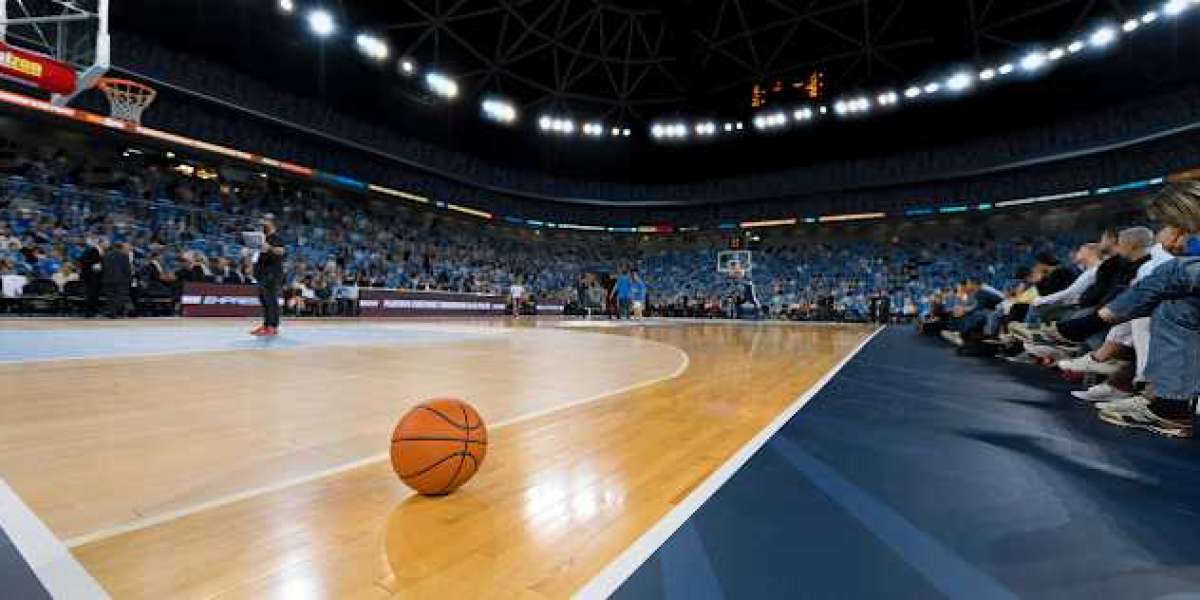Constructing a basketball gym represents a substantial investment. Business owners and sports enthusiasts often explore the financial aspect of building a basketball facility before jumping into the project. Costs can spiral depending on numerous variables such as the scale of the gym, the quality of the flooring, the necessity for seating, and whether you plan to construct a professional-standard gym or a simple, community-focused space.
Access to high-quality basketball facilities is crucial for training and hosting competitive games; thus, careful planning of your budget is essential. Location also plays a pivotal role in determining construction costs, which can escalate in urban areas versus more rural settings. It's clear that embarking on such a project requires detailed cost analysis to ensure financial feasibility and success.
Cost Factors For Basketball Gym Construction
If you dream of shooting hoops in your own basketball gym, it's essential to know the costs involved. Factors such as location, size, and design all play a part in the final price tag. Understanding these elements helps in planning and budgeting for your basketball haven. Let's dive into the cost factors that influence basketball gym construction.
Site Preparation And Location
The foundation for any gym begins with its site. Site preparation and location can greatly impact your budget. Costs vary based on:
- Land acquisition: Prime locations come at a premium.
- Site clearing: Clearing trees or debris affects your budget.
- Zoning laws: Local regulations might dictate additional costs.
- Utility access: Water, electricity, and sewage hookups are crucial.
Expect higher expenses in urban areas compared to rural sites.
Size And Complexity Of The Structure
Size and complexity dictate material and labor expenses. Key points include:
- Indoor vs. outdoor: Indoor courts require walls, flooring, and roofing.
- Materials: From basic to high-end finishes, material choices affect costs.
- Amenities: Adding locker rooms or bleachers increases your budget.
- Equipment: Hoops, scoreboards, and seating are necessary additions.
A standard gym may cost less than a state-of-the-art facility.
Materials And Equipment Expenses
The dream of building a basketball gym extends beyond just space. Costs for materials and equipment are crucial pieces of the financial puzzle. A clear understanding of these expenses ensures a solid plan for your basketball haven. Let’s dive into the flooring and hoops!
Flooring Types And Costs
The foundation of any basketball gym is its flooring. The right choice affects both performance and safety. Explore the most common options:
- Hardwood: Traditional and professional. Prices range approximately between $3 to $12 per square foot.
- Multi-Purpose: Versatile and cost-effective. Costs hover around $2 to $5 per square foot.
- Rubber: Durable and shock-absorbent. Estimate an expense of $3 to $8 per square foot.
Each choice has its merits, tailored to different budget levels and needs.
Basketball Hoops And Accessories
Key components must be top-notch for the game to go on. Consider these necessary elements:
Item | Cost |
Basketball Hoops | $200 - $2,000 |
Backboards | $100 - $1,500 |
Nets | $5 - $100 |
Padding | $50 - $300 |
These ranges capture a variety of choices, from basic to pro-level equipment. Include other accessories like scoreboards and seating to complete your gym.
Labor Costs Explained
Labor costs form a significant part of the budget when building a basketball gym. Understanding these costs ensures your project stays on track financially.
Professional Fees And Contractors
Building a basketball gym involves various professionals. Each expert has a predefined rate for their services.
Professional | Role | Typical Cost |
Architect | Design Planning | $2,000 - $6,000 |
Engineer | Structural Assessment | $1,500 - $3,000 |
General Contractor | Overall Management | 10-20% of Total Cost |
Expect to negotiate fees based on the gym's complexity and size. Contractors manage the project and hire subcontractors.
Specialized Labor For Technological Installations
Basketball gyms today are often equipped with high-tech features.
- Electronic Scoreboards
- Sound Systems
- LED Lighting
Specialized technicians handle these installations. Their fees can vary.
- Scoreboard installation: $500 - $2,000
- Sound system setup: $1,000 - $4,000
- Lighting fixtures: $2,000 - $6,000
Note the expertise needed for each feature. This ensures quality installations.
Permitting And Legal Fees
Building a basketball gym comes with its share of paperwork. Permitting and legal fees can be a surprise for many. These costs will vary based on local laws and the size of your project. Get ready to dive into the world of zoning and budget adjustments!
Understanding Local Zoning Laws
Zoning laws have a big impact on gym construction costs. Your gym must fit within local rules. Knowing these early can save time and money. Reach out to local building authorities or hire a professional to guide you through this step.
Cost Variations By Region
Location changes costs. Some areas have higher fees for permits and legal matters. It's essential to research your specific region. This will help set a realistic budget. Below are key factors to consider which influence these variations:
- County-specific regulations
- Cost of living in your area
- Local demand for construction services
Design And Architecture
The design and architecture of a basketball gym play a critical role in its setup. Building a facility that meets athlete needs while staying within budget requires careful planning. Every design element contributes to the final cost.
Basic Design Considerations
Space dimensions and court layout form the foundation of gym design. These considerations shape the gym's functionality:
- Court size - standard basketball court dimensions.
- Clearance - space around the court for safety.
- Seating capacity - to accommodate spectators.
- Accessibility - ensuring ADA compliance.
- Parking space - adequacy for peak times.
Advanced Design Features
For those seeking premium facilities, advanced features can be integrated. This integration raises costs but enhances the experience:
- Smart lighting systems - for energy efficiency and ambiance.
- Acoustic engineering - improves sound quality inside the gym.
- High-quality flooring - extends durability and athlete safety.
- Ventilation systems - maintains air quality and comfort.
- Technological integrations - scoreboards and sound systems.
The inclusion of these advanced features requires detailed architectural plans and potentially higher expenses, but they add value to any basketball gym project.
Heating, Ventilation, And Air Conditioning (hvac) Systems
When designing a basketball gym, ensuring a comfortable environment is crucial. The HVAC system controls the gym's climate. It keeps the temperature right and the air fresh. A top-notch system impacts player performance and audience comfort.
System Options And Installation
Choosing the right HVAC system involves several options. Consider the gym's size and the average number of people using it.
- Central Air Conditioning - Ideal for large spaces.
- Split Systems - Good for controlling different zones.
- Heat Pumps - Efficient for both heating and cooling.
- Geothermal Systems - Sustainable but higher upfront costs.
Installation costs vary. It depends on the system type and gym size. Seek quotes from certified professionals. They will provide the most accurate estimates.
System Type | Installation Cost |
Central Air | $4,000-$6,000 |
Split Systems | $2,000-$14,500 |
Heat Pumps | $5,000-$15,000 |
Geothermal | $10,000-$20,000 |
Operating Costs
After installation, think about expected running expenses. These include regular maintenance and energy bills.
Smart thermostats can cut costs. They adjust temperatures when the gym is not in use.
- Maintenance - Often $150-$500 yearly.
- Energy Bills - Depend on system size and use.
- Upgrades - Additional sensors or controls may be needed.
To manage expenses, monitor energy use monthly. Use Energy Star certified products. They are more efficient and can save money.
Additional Amenities And Features
Building a basketball gym goes beyond the court itself. Amenities and features play a significant role in the overall experience. They can also affect the cost. Top-notch facilities aim to provide comfort and enhance the use of the space. Let's dive into some of these additional amenities.
Seating And Locker Rooms
Quality seating areas and locker rooms add value to a basketball gym. Here's a brief look into the costs:
- Retractable bleachers offer flexible seating options. Prices range from $4,000 to $10,000.
- Permanent seating costs more, possibly reaching $100 per seat.
- Locker rooms vary by size and luxury. Basic setups start at $500 per square foot.
Sound Systems And Scoreboards
A great game environment needs clear sound and scoring visibility. Here's a look at these costs:
- Quality sound systems start around $2,000.
- Professional scoreboards cost between $3,000 to $20,000.
Amenity | Cost |
Bench Seating | $200-$500 per bench |
Digital Sound System | $5,000-$10,000 |
LED Scoreboard | $10,000-$30,000 |
Remember, prices will vary. The final cost depends on quality, brand, and scale of your project. These amenities complete the basketball gym experience for players and spectators alike.
Long-term Costs And Maintenance
Building a basketball gym is an exciting venture. Yet, once the final whistle blows on construction, the game of maintaining your investment begins. Wise owners know that a gym requires care to stay at the top of its game. From bouncing balls to the buzz of the scoreboard, we will dive into the long-term costs and maintenance that keep the game going beyond opening day.
Routine Maintenance Expenses
The upkeep of a basketball gym is continuous, like the dribble of a ball. Floors need regular refinishing. Walls require fresh paint. The nets and rims ask for replacements. Let's break down these expenses.
Routine care includes:
- Court: Sanding and resealing, about every 2-3 years.
- Equipment: Inspections and adjustments, annually.
- Facility: HVAC, lighting, and cleaning, monthly.
Reserve Fund For Repairs And Upgrades
Equipment ages. Styles change. Technology advances. A reserve fund for repairs and upgrades is essential for longevity. Here's why.
Reserve funds handle unexpected repairs. They allow for modern enhancements. They keep equipment safe and functional.
Key items to consider for your reserve:
- New scoring systems.
- Seat replacements.
- Advanced lighting solutions.
Plan to put a portion of revenue into this reserve. This ensures your gym remains a first-choice destination for years to come.
Funding And Financing Options
Building a basketball gym is an exciting adventure. Yet, it requires a good amount of capital. Let's dive into how you can secure the funds to turn your dream into reality.
Private Investment And Sponsorships
Finding the right investors can take your project to the next level. Aim to present a strong business plan. This will attract people with the funds to invest. Consider contacting local businesses for sponsorships.
- Local entrepreneurs might see potential in your gym.
- Reach out to sports brands for possible partnerships.
- Offering naming rights can lure in major sponsors.
Loans And Grants
Several institutions offer financial assistance. Look into both loans and grants to fund your gym.
Type | Source | Pros | Cons |
Loans | Banks, credit unions | Immediate funds | Interest rates apply |
Grants | Government, foundations | No repayment | Tough competition |
- Research government sport development programs.
- Check with local banks for low-interest loans.
- Look for non-profits that offer grants for sports facilities.
Cost-saving Strategies
Building a basketball gym can run a hefty tab. But, fear not! Smart strategies slash costs while keeping quality high. Cut down on expenses without compromising your hoop dreams. Read on to discover wallet-friendly tips for your basketball gym project.
Economical Material Choices
Selecting the right materials can significantly reduce your costs. From flooring to seating, options abound that balance cost and quality. Here's how to save:
- Opt for composite flooring over hardwood: It's cheaper and durable.
- Choose pre-fabricated steel frames: Less labor equals lower costs.
- Consider alternative seating like bleachers or portable chairs for flexibility and savings.
Energy Efficiency And Green Building
Investing in energy efficiency pays off in the long haul. It's kind to the planet and your pocket. Look at these eco-savvy choices:
- LED lighting: They last longer and use less power than traditional bulbs.
- Install solar panels: They can offset electric bills and sometimes earn you credits.
- Employ smart thermostats for better temperature control and savings.
Feature | Benefits | Approximate Savings |
LED Lighting | Lower energy consumption | 50-70% |
Solar Panels | Reduce or eliminate electric bills | Varies |
Smart Thermostats | Optimize heating and cooling | 10-12% on heating, 15% on cooling |
Real-world Examples
Exploring the costs of building a basketball gym brings to light diverse financial tales. Each project tells a unique story, molded by its goals and scale. Insights from actual gym construction projects can illuminate what might lie on the road ahead for those considering similar endeavors.
Case Study Of A High School Gym
Recently, a local high school embarked on a journey to build a new basketball gym. The school board approved a budget that accounted for many elements. Some standout costs included:
- Construction materials: High-durability flooring, hoops, and bleachers
- Building: Brick-and-mortar work, roofing, and electrical installations
- Design: Architect fees for a custom layout
The final tally for creating this educational sports haven was near $500,000. This figure included state-of-the-art lighting, player amenities, and seating for spectators. The investment aimed to boost school spirit and community engagement.
Comparative Analysis Of Professional Arenas
Professional basketball arenas stand in stark contrast. They come with hefty price tags, reflected in their cutting-edge facilities. Consider two pro-arena constructions:
Arena | Location | Capacity | Cost |
Arena One | Downtown Metropolis | 20,000 seats | $850 million |
Arena Two | Coastal City | 18,000 seats | $750 million |
Their costs reflect premium features such as VIP lounges, expansive digital screens, and commercial spaces. Size and location also dictate the final investment. With these figures in mind, aiming for a professional setup can suggest a billion-dollar budget.
Your Next Steps
Embarking on the construction of a basketball gym is thrilling. Plan carefully for a smooth process. Setting a clear budget and timeline helps. Let's delve into the specifics to turn your dream gym into reality.
Detailed Planning And Budgeting
Start with detailed planning. This includes designing the gym layout. You must consider the court, seating, and locker rooms. List all your needs and wants for the space. It ensures no surprise expenses. Understand every cost associated with the building process.
- Construction materials: They greatly influence the total cost.
- Contractor fees: Research and compare rates.
- Equipment costs: From hoops to gym flooring.
- Permits and licenses: Required for legal compliance.
- Insurance: Protect your investment during and after construction.
Allocate funds for each category. Use a spreadsheet for easy tracking. A contingency fund is also critical. Typically, 10-20% of your total budget is recommended to cover unexpected costs.
Timeline For Construction And Opening
Develop a realistic timeline. Consider each construction phase meticulously. Plan for potential delays. Harsh weather or material shortages can alter timelines. Here's a simplified guide:
Phase | Duration |
Design and Approvals | 2-6 months |
Site Preparation | 1-2 months |
Construction | 6-12 months |
Finishing Touches | 1-2 months |
Work closely with your contractor for precise scheduling. Stick to the plan but stay flexible. Set a grand opening date after consulting your team. This allows enough time for staff training and marketing your new gym.
Clear planning and a detailed budget ensure no surprises. A realistic timeline paves the way for a successful launch. Take these next steps carefully and watch your basketball gym ambitions take shape!
Frequently Asked Questions On How Much Does It Cost To Build A Basketball Gym
What Is The Average Cost Of Building A Basketball Gym?
The average cost to build abasketball gym ranges between $10,000 for a basic setup to over $1 million for a high-end facility. Variables such as size, location, materials, and amenities contribute to the final cost.
Can I Build A Basketball Gym On A Budget?
Yes, it is possible to build a basketball gym on a budget. Prioritize essential elements like flooring and hoops. Consider economical building materials and cost-saving construction methods. Seek partnerships or sponsorships to help mitigate expenses.
What Are Key Factors Affecting Basketball Gym Construction Costs?
Key factors include the gym's size, geographic location, choice of materials, level of customization, and additional features like seating or electronic scoreboards. Local labor costs and building permits also significantly affect the overall expense.
How Much Does Professional Basketball Gym Flooring Cost?
Professional basketball gym flooring can cost between $3 to $15 per square foot. The price varies based on material quality, subflooring requirements, and whether it's a hardwood or synthetic surface. Installation charges are additional.
Conclusion
Embarking on a basketball gym construction project requires careful budgeting and consideration of various cost factors. Whether it's for personal use or community benefit, establishing your financial framework is essential. Keep in mind that the initial investment will pave the way for years of active enjoyment and community engagement.
Start planning your dream court today and shoot for success!
To know About other cost Ideas visit :
Automotive - Building Cost - Opening Cost - Fixing Cost - Replacing Cost







